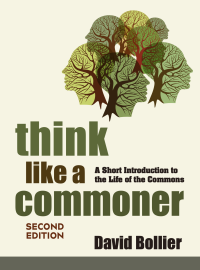Do we “own” our bodies? As medical science finds ingenious new ways to study and restore the human body, new questions are arising about how the law should treat human body parts. In the New England Journal of Medicine (October 12, 2006, pp. 1517-20), R. Alta Charo writes: “Courts now face multiple controversies concerning the use of bits and pieces of bodies — and their derivatives — that are scattered among pathology laboratories, state hygiene laboratories, museums, archives, sperm banks, fertility clinics and forensic DNA collections.” (Thanks to David Kaufman for alerting me to this article!)
Naturally, property law presents itself as a solution to these problems. But should we recognize property rights in corneas taken from cadavers, the frozen embryos of women who are still alive, and the stored semen from men who have died? Or does property law lock us into a whole set of dubious social categories that create more problems than they solve?
The case that opened the Pandora’s box in 1990, Moore v. Regents of the University of California, held that a patient could not claim a share of profits derived from the patents on a cell line generated from his spleen tissue. The court concluded that John Moore, the patient, was not entitled to any property rights because his cells were naturally occurring, but that the patentees were entitled to patent rights because they “invented” a new medical therapy.
More recently, William Catalona, a prostate cancer surgeon who worked at Washington University in St. Louis, tried to take a collection of 3,500 tissue samples that he had amassed over decades to another university. A court found that the tissue donors never had any property rights in their tissue, and so the collection belonged to Washington University. Neither the donors nor Catalona could legally force the university to cede possession to anyone else.
This is tricky territory because if you argue that patients should be able to own their tissue as property, you are likely to impede medical research. If people could own their bodies, they would have the right to sell their organs and control the “property” of their heirs, i.e., cadavers and tissue in old repositories. On the other hand, do we really want medical researchers to make money — sometimes enormous profits — from donated human tissue?
“Respect for persons and their autonomy can be promoted through many legal frameworks,” writes Charo, citing the rights of privacy and informed consent. She suggests that our relationship with our bodies “may be viewed as a trusteeship”:
Even if [our bodies] are not our property, we nonetheless have extensive and exclusive rights with respect to them, at least while we are alive and our bodies are intact. Even with such a view, bodies and tissues may be viewed as part of a common heritage of humanity, to be used for the collective good if such use does not unduly infringe on our liberties…
Charo doesn’t explore this idea much, but she does include a footnote to an article, “The Charitable Trust as a Model for Genomic Biobanks,” which appeared in the New England Journal of Medicine in 2003. The authors conclude that medical researchers who have samples of blood, tissue and medical information should not give them to private “biobanks” in return for access to the samples and equity stakes; researchers should put them in a charitable trust, which would protect the rights of individual donors while assuring broad scientific access. “The tissue trust can comply with increasingly stringent rules about privacy and informed consent without losing its values as an information-rich genomic resource,” write David E. Winickoff and Richard N. Winickoff.
If we use a trust model, we can foster cooperation, research access and collective benefits while respecting individual choices. I think this is a lesson that can be generalized to other commons as well.











Recent comments